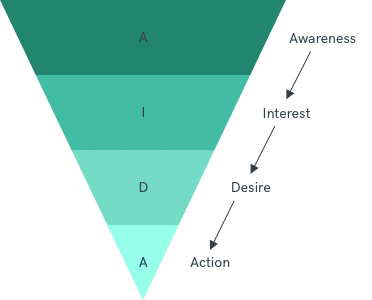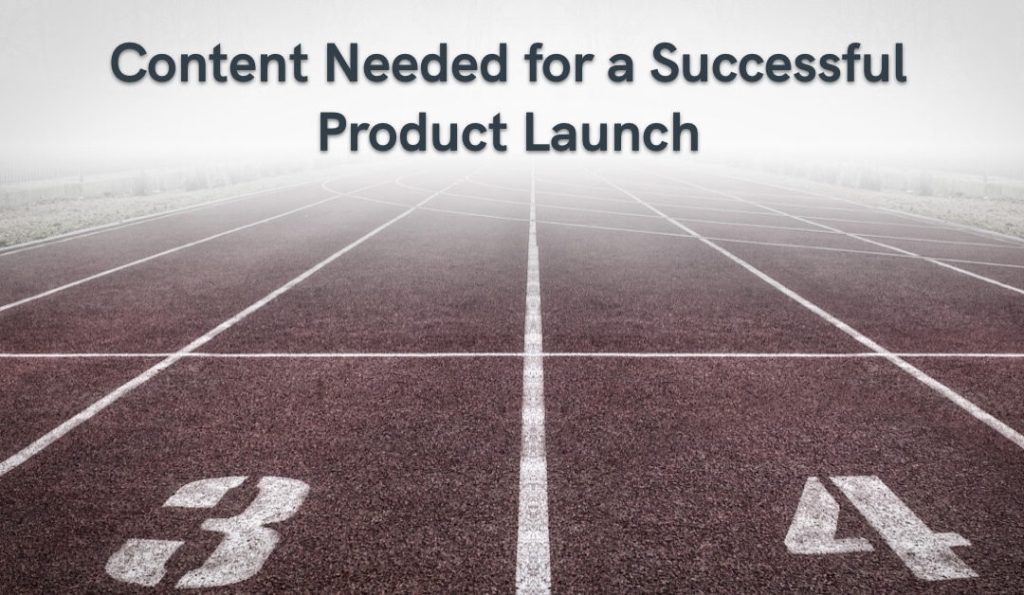There’s a great deal of debate about how many new products launch each year and the failure. Some say the failure rate is as high as 90%. Other claims it’s much lower. Either way, the risk of failure is high. Even the biggest brands and best marketers have missed the mark on occasion.
Remember these? New Coke, Crystal Pepsi, Apple Newton, Microsoft Zune, the ESPN Phone – the list could go on for days.
When it comes to ensuring a successful product launch, you want to create content that beats these odds.
Table of Contents
ToggleMarketing for a Successful Product Launch
When preparing for a new product launch, you’ll want to leave adequate time to create product launch content to support the rollout. Everything needs to be in place when it’s go-time. That will mean creating a strategic plan that aligns your content with your sales and marketing teams.
You need a consistent approach across all your content that supports the effort and provides insights at every level of the buying funnel.
The Marketing Fundamentals
There are a few B2B marketing fundamentals that need to be consistent throughout your content for the product launch to be effective. It starts with a three-step approach:
- Connect with the B2B buyers who have the power to act
- Drive engagement with your content
- Build trust in your product and brand
They aren’t going to buy what you’re selling if they don’t know who you are or trust your brand. When rolling out a B2B marketing product launch, your strategy will depend on whether it’s a revolutionary solution or an upgrade to an existing one, and whether you’re a new brand or an established one. While your approach and B2B marketing may come in many different forms, your underlying messaging needs to focus on two key fundamental traits:
- Define a problem that your B2B buyer is facing
- Explain how your product can remedy their problem
It’s a fairly simple concept: Find a problem. Fix a problem. When you can show people how your product or service will alleviate their pain points, you’ll get their attention. We’re happy to partner with you to align your marketing messaging for an upcoming product launch. Chat with us to see how we can help!
Here are some approaches you can take with your content to help drive engagement with your B2B marketing product launch.
Email Marketing: A Time & Place.
A new product launch is probably not the best time to send the first email to a prospect. Before they buy the software, they’ve got to know your brand and already have confidence in your company. Instead, your product launch email marketing strategy should be part of an overall strategy to provide valuable insight and relevant content to your prospects.
Many companies make a serious mistake when using email to market new product launches: they forget the fundamentals. Nobody wants to read a press release or email that’s just a sales pitch. At this point in the customer journey, you’re trying to engage them and get them to take the next step – whatever that is. Make sure you tell them what the next step is and what you want them to do.
Segmenting your database is also essential. Not every customer is at the same level or will have the same need for your software. Tailor and deliver your message to your best, most engaged prospects.
Find the ideal customer profile for the new product that you’re launching, and segment your database with that profile in mind. Does this new software benefit companies with more than 100 employees? Build a list and send your new product launch content to companies in your database with greater than 100 people at it. This is just one (small) example to build your segmentations out appropriately. Done at a large scale, you can be sure to deliver relevant content to your contacts for this product launch.
Blog Posts that Speak to Your Audience
Blog posts play an important role for several reasons.
- It can help drive organic search when people are looking for your product. Make sure you’re inserting the keywords and phrases that B2B buyers are using when they search online.
- It can stimulate engagement. Make sure you provide enough value that people will engage and offer them multiple pathways to learn more.
- It can also act as a lead generator. Make sure there’s a call-to-action in every piece you create.
 Don’t think of blogs as press releases. Use them to tell the “why” behind the “what.” Tell stories about the reason you developed the product in the first place. If you tested it in the wild, showcase a case study that solved a real customer’s problem. If possible, get personal. When you can make it about people and how a product will help make things better for them, it’s more likely to resonate.
Don’t think of blogs as press releases. Use them to tell the “why” behind the “what.” Tell stories about the reason you developed the product in the first place. If you tested it in the wild, showcase a case study that solved a real customer’s problem. If possible, get personal. When you can make it about people and how a product will help make things better for them, it’s more likely to resonate.
An effective strategy is to create an overview piece which then branches off into additional content items that take a deeper dive into specific features and benefits.
B2B buyers these days do a lot of research before they make purchase decisions. As they work their way through the customer journey, you need to create content for each stage from Awareness to Interest to Desire to Action (AIDA).
Leverage Testimonials
Much of selling in business is about risk mitigation. When B2B buyers see others in similar situations that have invested in your products and had success, it can help relieve the risk.
Testimonials offer what we call “social proof.” When we see other people like us using a product or realizing a benefit, we’re more likely to accept it.
You can generate testimonials from your current customers. You can ask your sales team to query their best customers for testimonials or send out a survey with open-ended questions and then highlight the positive responses. With a product launch, you may want to beta test the new product with a few current customers and get them to talk about the benefits they found.
Webinars
Webinars can be a powerful way to engage with B2B buyers. They work best in the middle of the buying funnel after potential customers are aware of your brand and your product.
Attending a webinar is a commitment for a B2B buyer. They’re giving up their time, so you better give them something of value. You want to make sure you’re not just trying to sell, save that for another time. Webinars should educate, inform, and let attendees walk away feeling they learned something of value that can help them in their job. This helps establish you as an authority and engenders trust.
Webinars provide a deeper level of engagement. When you can convince someone it’s worth their time to attend, they’re interested.
Video Content & Other Media
If you’re not developing video content as part of your B2B marketing product launch strategy, you’re missing a big opportunity. Here’s what B2B marketers say about video in 2020:
- 85% of businesses use video as a marketing tool
- 92% say video is a key component to their marketing
- 88% say video leads to a proven ROI
Product demonstrations, how-to videos, and explainers can help showcase your product in a variety of ways. Video can be embedded in your blog posts, distributed on social media, and posted to your website.
Social Media
When we talk about social media, the first thing we usually think about is Facebook or Instagram. While these can be powerful tools when segmenting your audience, LinkedIn is the most common social network used by business people when they are doing their research before making buying decisions. According to the Content Marketing Institute, 82% of B2B marketers report they achieve greater success on LinkedIn versus other social channels.
Don’t underestimate the power of strong visuals. Images improve the engagement 2.3 times, according to BuzzSumo research. Brand images that show someone interacting with your product, such as a close-up of a hand, perform better than other images as it helps people visualize themselves using the product.
Visuals such as infographics, charts, and diagrams help tell the story visually and are more shareable for social media content.
Brand Ambassadors & Thought Leaders
You can recruit influencers and brand ambassadors to help promote your product launch. You can use your employees as well. Consider adding a topical tag line to everyone’s email that links to your product launch content. Ask employees to link to it on their social media accounts.
The best way to find credible influencers in your industry is to search through discussion forums or look to your competitors – do they partner closely with specific companies? Follow relevant hashtags on your target social media profiles and see which posts are being interacted with the most. These accounts are likely a good starting point to finding influencers in your area of expertise.
When you send your brand ambassadors information, make sure to provide content and images that make it easy for them to post on the appropriate mediums.
Creating an Editorial Content Calendar
![]() Most successful B2B marketers are using a content calendar to manage blog posts and other content to make sure they are aligning sales and marketing efforts with the new product launch. You’ll need to define each of these goals:
Most successful B2B marketers are using a content calendar to manage blog posts and other content to make sure they are aligning sales and marketing efforts with the new product launch. You’ll need to define each of these goals:
- What content do you need to create?
- What is your goal is for each piece of content?
- Who is the target audience?
- What form will the content take?
- Where will you distribute your content?
Once you’ve answered these questions, you can map out your content development strategy. You’ll need to analyze your in-house resources and decide whether you need to outsource your product launch content development. For example, you may want to hire freelancers to help generate content or hire an experienced B2B marketing agency.
With this information, you can plot your content rollout on a calendar and work backward from launch dates. Build in time to create, review, and approve the content to make sure each piece meets your marketing goal. Then, make sure your timing matches the product launch.
You should not think of your product content launch as a “one and done” strategy. You should develop multiple pieces on multiple platforms and stage it over time so you can keep it front and center for your ideal customers.

Measure Everything You Can
Not every piece of content you develop is going to work. That’s why it’s so important to establish goals before you start to create. You need to measure which content drives conversions, whether it’s signing up for an email list, downloading a white paper, clicking to watch a video, asking for a product demo, or some other goal relevant to your organization.
When you find content that resonates, it’s time to turn up the volume. This might mean additional marketing for the content, adding additional distribution channels to increase your reach, or expanding on the topic.











